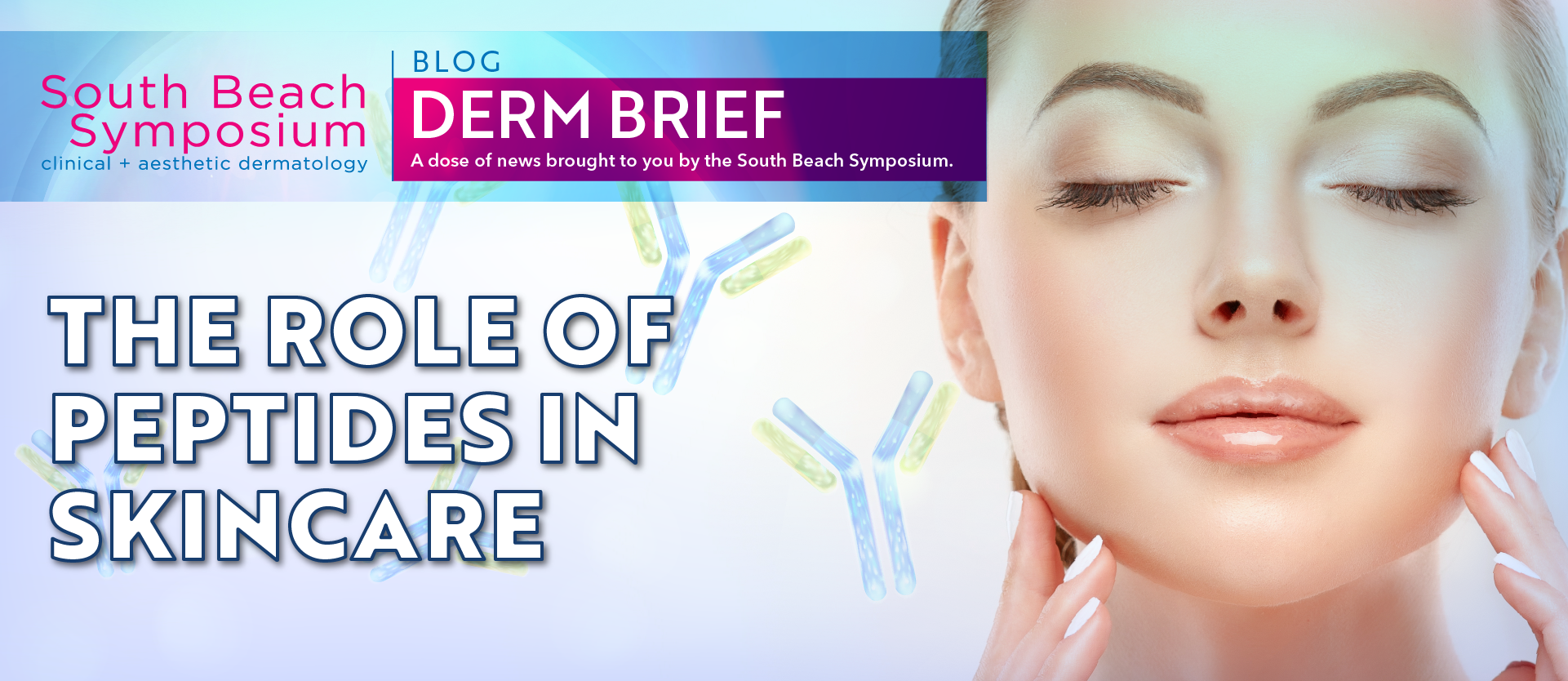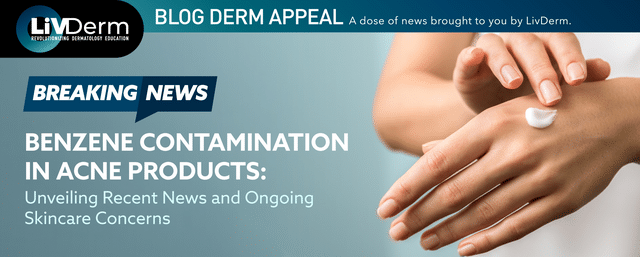Few therapies are gaining as much clinical credibility, growing popularity, and increasing relevance as peptides: now utilized and applied in numerous therapeutic areas including chronic inflammatory disease, various autoimmune disorders, age-related conditions, and now clinical & aesthetic dermatology—expected to surpass $25 billion by 2018, in a rapidly expanding and cutting-edge market.
What are peptides?
As novel innovative drugs that have gained a wide range of applications in medicine and biotechnology, peptides are short chains of amino acids: the building blocks of proteins. Responsible for the skin’s tone and texture, the most commonly known proteins in the skin are keratin, elastin, and keratin. There are hundreds of different peptides, all of which are made from different combinations of amino acids. Peptides have recently generated interest as biologically active compounds incorporated into cosmeceutical products intended to treat aging skin.
How are peptides used?
Peptides are used to reinforce naturally-occurring proteins in the skin, through both maintenance and rejuvenation. While different types of peptides have varying effects, some smooth wrinkles, and others repair barrier function and increase firmness and hydration. Some peptides can be combined in one product; most are found in anti-aging products for skin that has begun to demonstrate a decrease in the production of essential proteins.
What are the major categories of peptides?
The most newly emerging peptides are engineered one amino acid at a time to essentially mimic a functional human protein fragment, with the intent to induce a positive biologic change. They fall into three primary categories: carrier peptides, signal peptides, and neurotransmitter peptides. Carrier peptides were first introduced into the pharmaceutical world for enhanced wound healing, in order to engineer peptides “to carry necessary wound healing cofactors to the active site efficiently and physiologically.” The first carrier peptide that was commercialized was isolated from human plasma and synthetically engineered; linking GHK to copper, abbreviated GHK-Cu, was utilized in wound healing creams and subsequently adapted to a line of facial cosmeceuticals to minimize the appearance of fine lines and wrinkles. The technology was commercialized by Neutrogena: based on in vitro observation of dermal keratinocyte proliferation in response to the copper linked peptide.
Unlike carrier peptides, signal peptides are engineered to create a biological response: currently marketed and tested in vitro to increase collagen, elastin, fibronectin, proteoglycan, and glycosaminoglycan production. Most peptides fall into this category, and signal peptides can be found in almost all peptide-containing products. The third category of commercialized peptides includes neurotransmitter peptides, designed to inhibit acetylcholine release, which reduces muscle contraction. These peptides are similar to botulinum toxin, in that both “selectively modulate synaptosomal-associated protein of 25,000 Daltons, abbreviated SNAP-25.” The most widely commercialized neurotransmitter peptide is acetyl hexapeptide-3, which is purported to block vesicle docking through prevention of the SNARE complex formation, which induces muscle relaxation.
The Specialty Track Anti-Aging & the Dermatologist, taking place on Saturday, February 9th at the 17th Annual South Beach Symposium, will review “Peptide Therapies for Dermatological Conditions.”
SOURCES
https://www.ncbi.nlm.nih.gov/pubmed/18045359
https://www.mdedge.com/edermatologynews/article/80383/aesthetic-dermatology/peptides/page/0/1
https://www.vogue.co.uk/article/skincare-alphabet-p-is-for-peptides
https://www.futurederm.com/4-kinds-peptides-peptide-best/
















